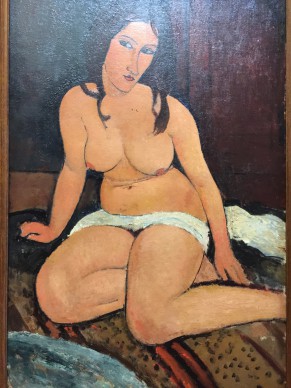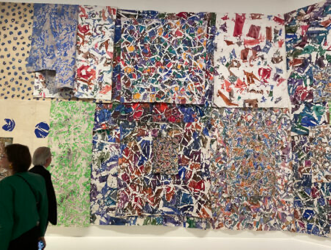France is a nation of great wealth, at least when it comes to art.
And one of the most beautiful modern collections outside Paris is in Villeneuve d’Ascq, on the outskirts of Lille, in a museum called Lille Art Moderne or LAM.
From Picasso (25 paintings) to Leger (20 paintings) via Modigliani (21 paintings) etc. it contains the collection of Roger Dutilleul, the enlightened amateur who fell in love with modernism and cubism in 1905, as well as that of Jean Masurel, Dutilleul’s nephew, heir and a collector in his own right, who donated to the city of Lille these works that are so integral to the history of art.
Every three years the local authorities grant LAM’s curator, Sophie Levy, a generous budget that allows the gallery to put on an outstanding exhibition linked to the collections. This year it’s a rendez-vous with Amedeo Modigliani (1884-1920) in a spectacular retrospective on until 5 June. It brings together 120 works, no less than 95 of them by Modigliani, giving audiences a great opportunity to refamiliarise themselves, beyond the facile stereotypes, with the creations of this master who produced those elongated faces which are his signature.
He led a short and turbulent life, filled with a burning desire to create and guided by artistic curiosity… In Villeneuve d’Ascq, the complete history of art is once again evoked.
The fragile, tubercular ‘Modi’ initially aspired to be a sculptor. According to Sophie Levy he produced 30 works in three dimensions, six of which are shown here.
Faced with this little known phase of his output, the aesthetic shock is powerful. The Italian artist draws from the wellsprings of Cycladian, Khmer and African art while also casting his eye towards the cubist Picasso to yield unique figures cut directly into stone.
Modigliani invents gracious goddesses and the masks of an unknown universal religion. He loves the ‘non-finito’ that you also find in his paintings when he abandons sculpture in 1914. Amedeo is by no means a servile portraitist. He has a soft spot for asymmetry and symbols. He plays with colours arranged in large expanses on the canvas. A few details are all he needs to evoke a subject, like with his friend the painter Soutine and his unkempt hair, the patron Dutilleul and his monk-like features or an unclothed creature with pale skin who reveals one breast like a sensuous invitation.
And then there are those punctured eyes that we find in almost all his portraits. Modigliani would have explained how one eye looks to the outside world while another is turned within. Long after his death, in the 1930s, Picasso acquired his painting Sitting Young Girl with Brown Hair (1918) where the subject quietly places her hands crossed on her stomach. It’s the same posture we find in The Dream, the famous portrait the Spaniard made of his mistress Marie-Therese in 1932.
The history of art is full of twists and turns.
Until 5 June.
www.musee-lam.fr
Support independent news on art.
Your contribution : Make a monthly commitment to support JB Reports or a one off contribution as and when you feel like it. Choose the option that suits you best.
Need to cancel a recurring donation? Please go here.
The donation is considered to be a subscription for a fee set by the donor and for a duration also set by the donor.











